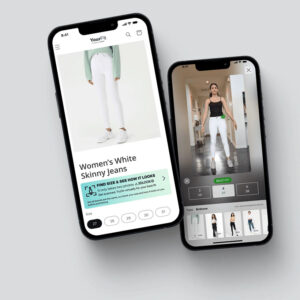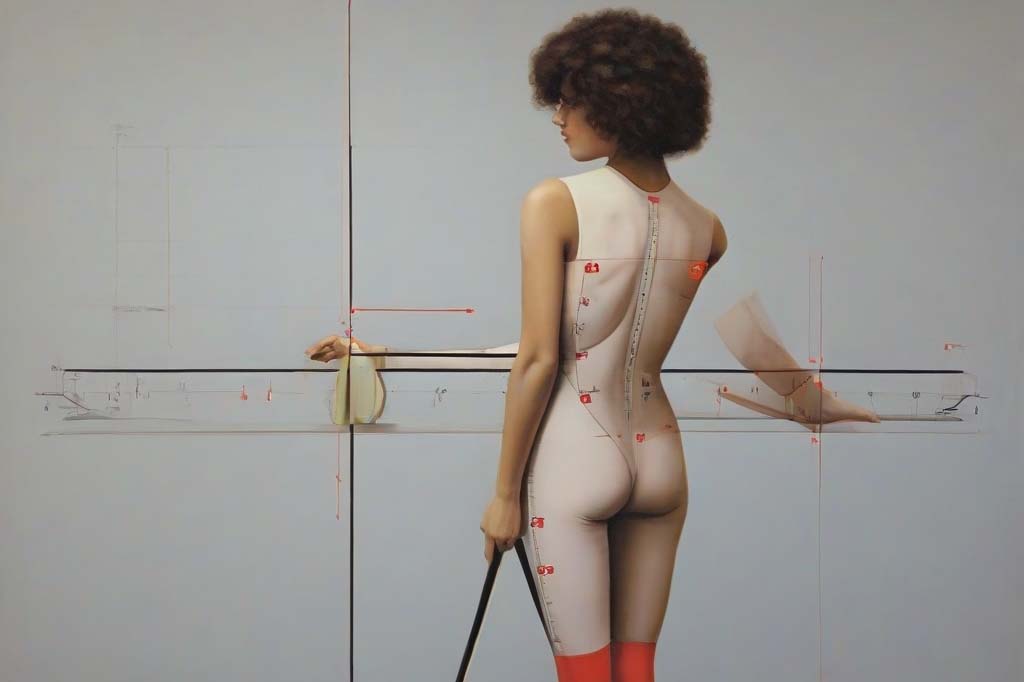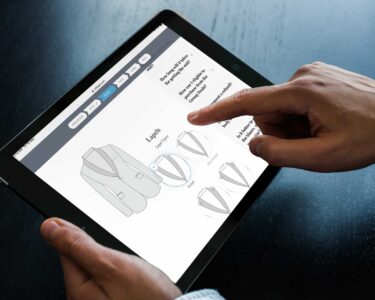In an age where convenience and precision are paramount, the traditional “tailor near me” search is undergoing a transformative upgrade through the integration of AI-powered body scan technology. This innovative approach is not only redefining the way we think about finding a tailor but also how we approach the entire process of getting custom-fitted garments. Here’s how this groundbreaking concept is shaping the future of tailoring.
AI-powered body scan apps are making the journey to a perfect fit more accessible and precise. With just a few clicks on a smartphone, users can now perform a full body scan from the comfort of their own home. These apps utilize advanced algorithms to analyze the scans and provide accurate body measurements, equivalent or even superior to those taken by a professional tailor. This technology effectively brings the tailor to you, bypassing the need to physically search for and visit a tailor’s shop.
 The fashion industry is witnessing a transformative era in custom tailoring, thanks to the rapid advancement of technology. The evolution of body measuring techniques from traditional tape measures to sophisticated digital solutions signifies a monumental shift in how bespoke clothing is crafted. This technological revolution is not only enhancing the precision of measurements but also making custom fashion more accessible and sustainable. Let’s delve into how these innovations are shaping the future of made-to-measure fashion.
The fashion industry is witnessing a transformative era in custom tailoring, thanks to the rapid advancement of technology. The evolution of body measuring techniques from traditional tape measures to sophisticated digital solutions signifies a monumental shift in how bespoke clothing is crafted. This technological revolution is not only enhancing the precision of measurements but also making custom fashion more accessible and sustainable. Let’s delve into how these innovations are shaping the future of made-to-measure fashion.
Historically, tailors relied on manual tape measures to capture the dimensions of their clients, a method requiring skill and experience to ensure accuracy. While effective, this process was time-consuming and prone to human error. The advent of 3D body scanners and augmented reality (AR) applications has dramatically changed this landscape. These technologies offer a level of precision previously unattainable, capturing every contour of the body in seconds and translating them into exact measurements. This leap in accuracy not only improves the fit of custom garments but also enhances the overall customer experience by streamlining the measuring process.
One of the most significant barriers to accessing made-to-measure fashion has been the necessity for in-person fittings. Technology is dismantling these barriers through virtual fitting solutions, allowing customers to obtain accurate measurements from the comfort of their homes. Apps and online platforms leverage the power of smartphones and AR to guide users through the self-measuring process, making bespoke fashion more accessible to a broader audience. This convenience is democratizing custom tailoring, once considered a luxury, and integrating it into mainstream fashion.
The precision offered by digital measuring tools has a profound impact on sustainability within the fashion industry. By ensuring a perfect fit on the first attempt, these technologies significantly reduce the need for alterations and returns, thereby minimizing fabric waste. Additionally, the data collected can optimize inventory management and production processes, ensuring that resources are used more efficiently. This shift not only supports the environmental aspect of sustainability but also promotes economic sustainability by reducing costs associated with waste and inefficiency.
In conclusion, the evolution of body measuring from traditional methods to cutting-edge technological solutions is driving a new era in made-to-measure fashion.
As technology continues to evolve, the potential for innovation in made-to-measure fashion is boundless. We are on the cusp of integrating AI and machine learning to predict customer preferences and further refine the fit of custom garments. Virtual reality (VR) could soon offer immersive fitting experiences, allowing customers to visualize and adjust their bespoke designs in a digital environment before production. These advancements promise not only to enhance the precision and accessibility of custom fashion but also to revolutionize the customer experience, making bespoke tailoring a standard rather than an exception.






